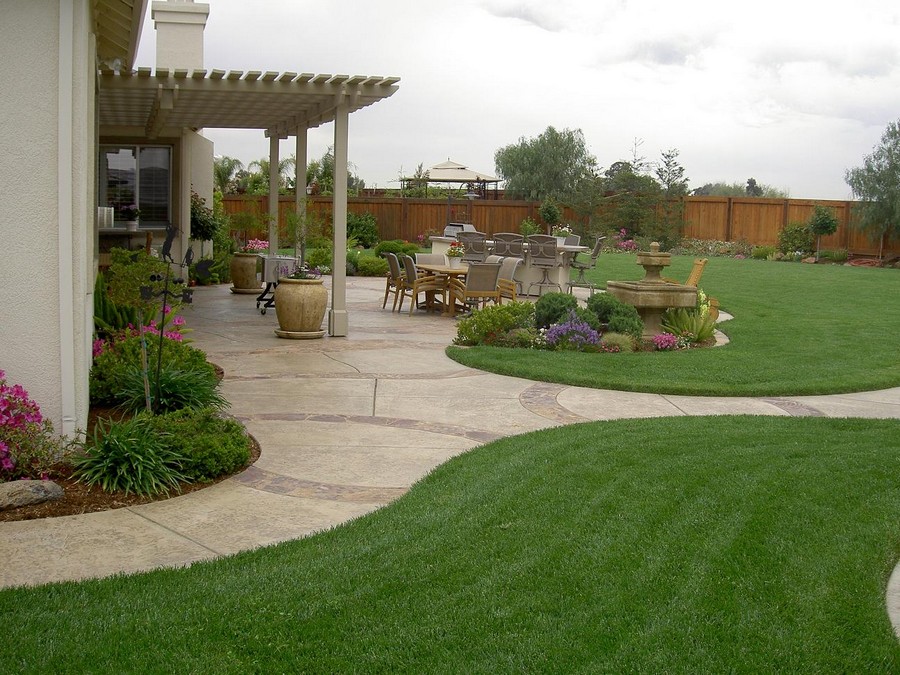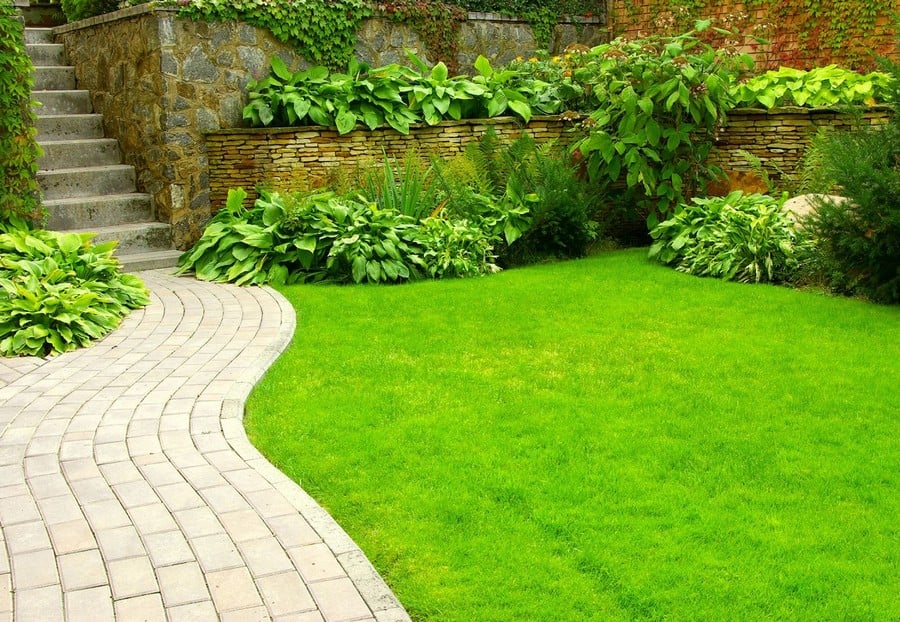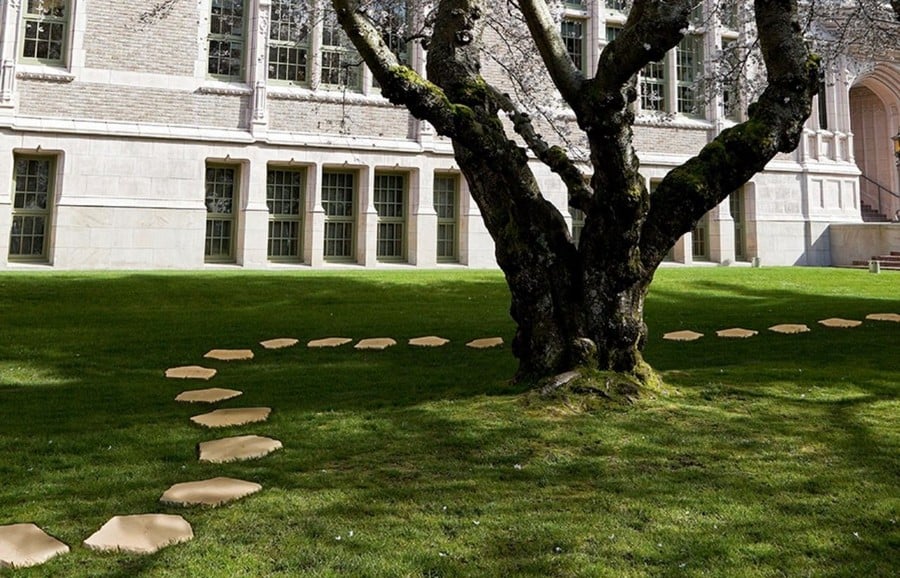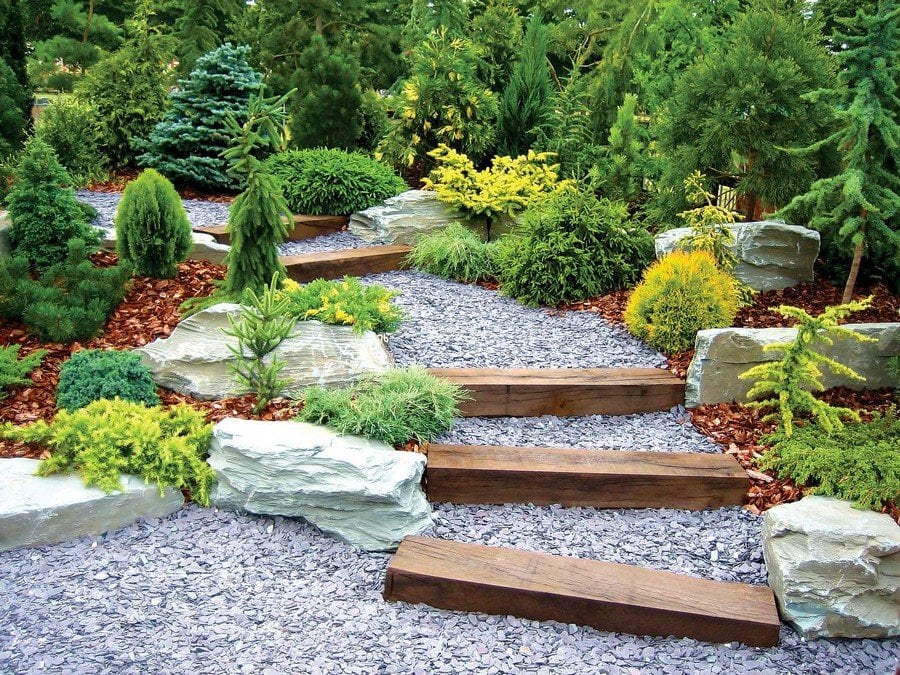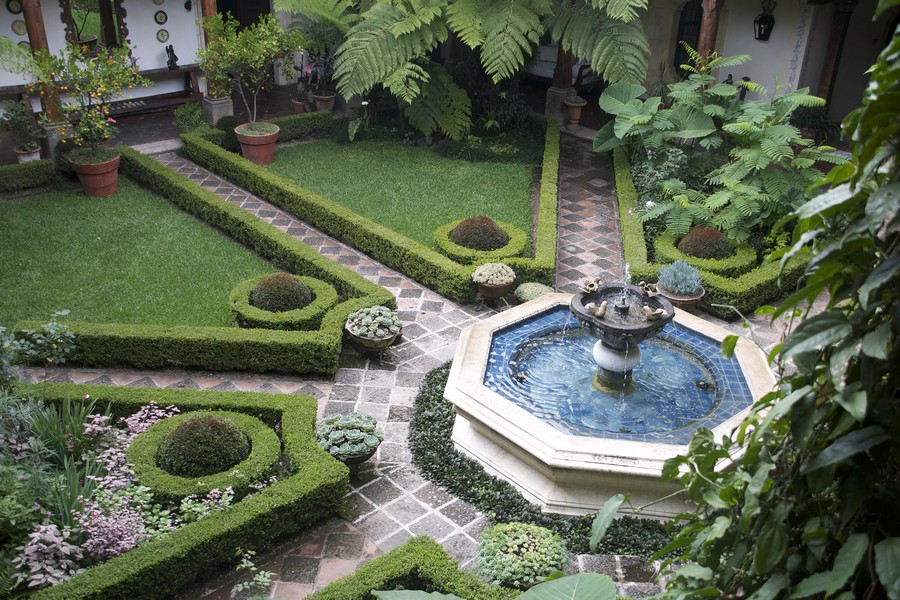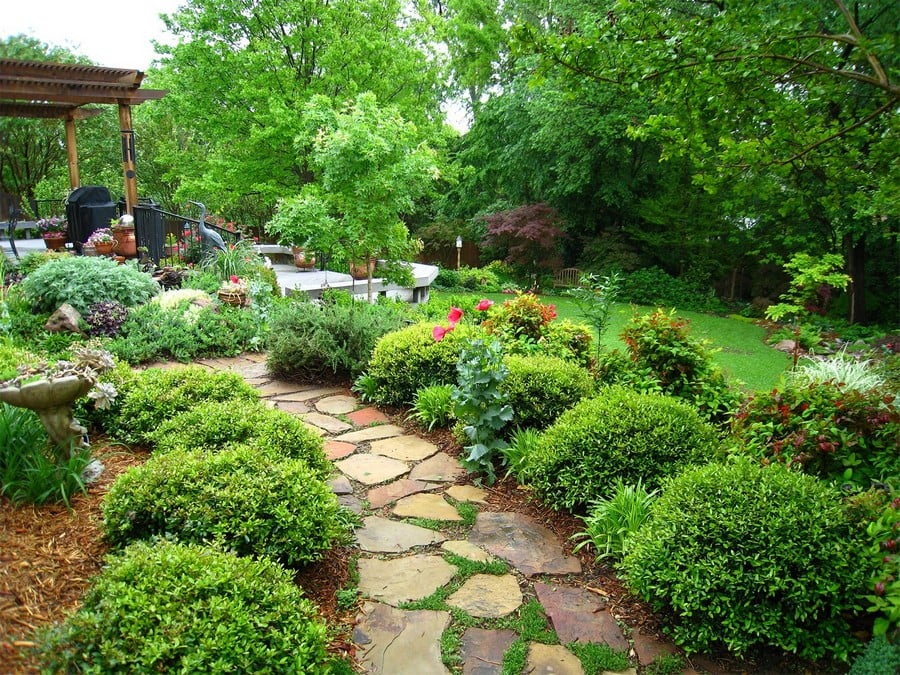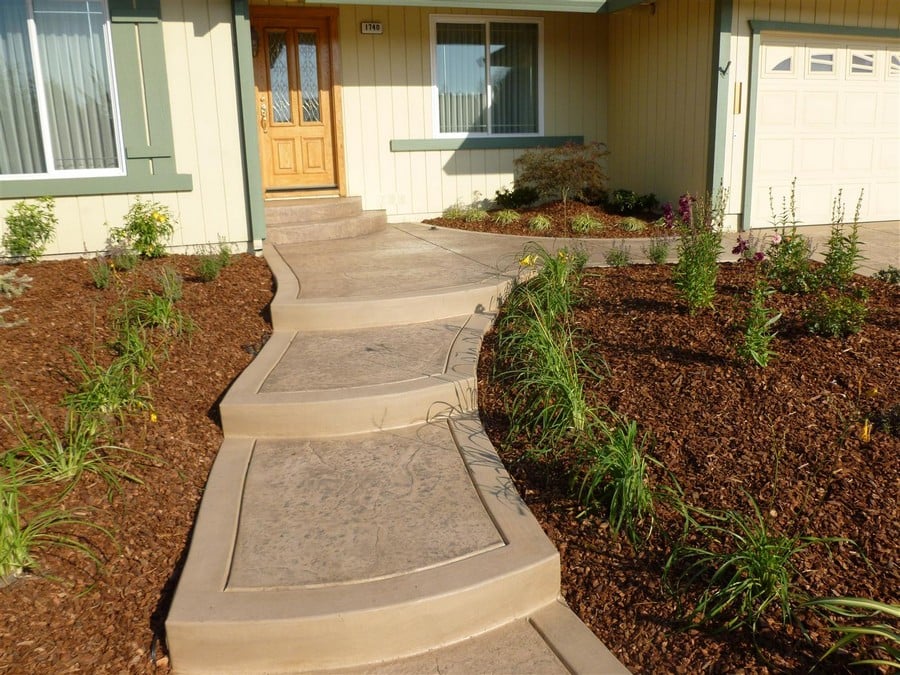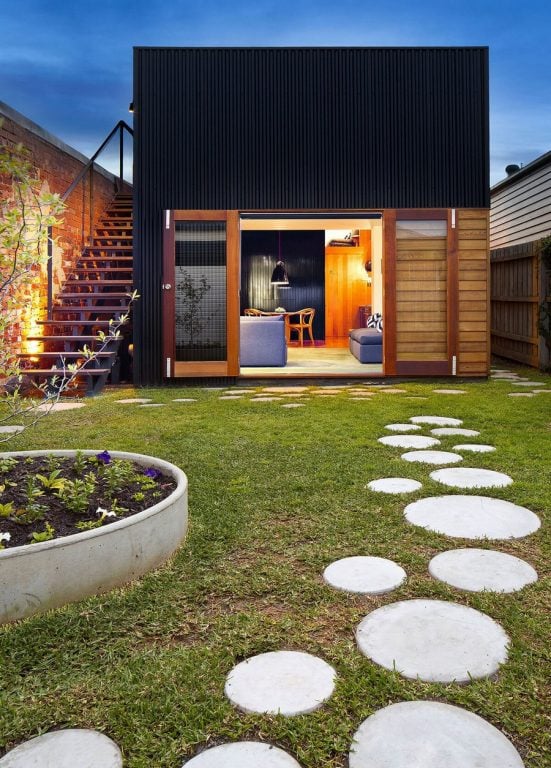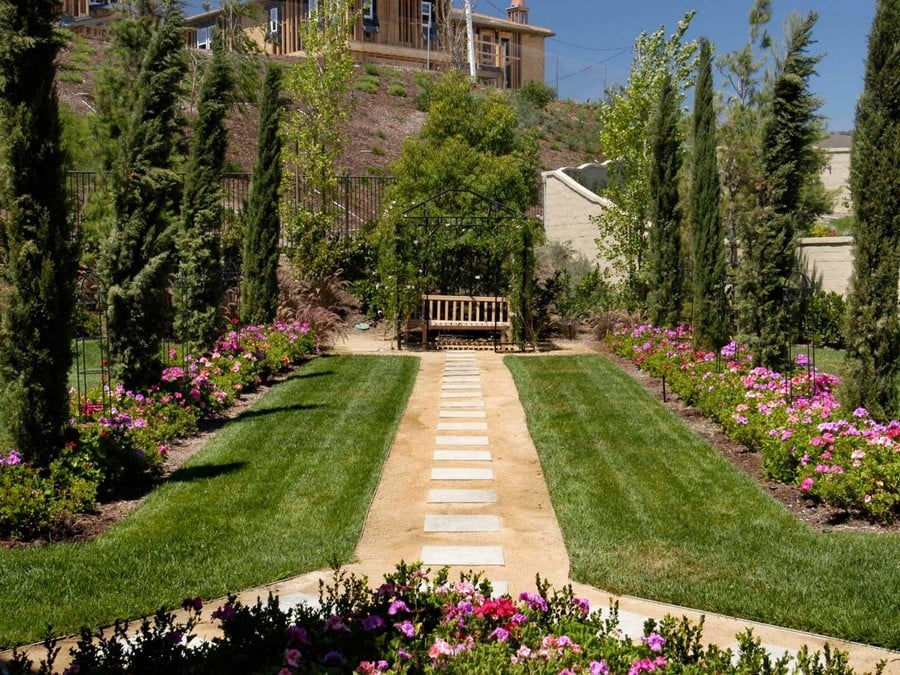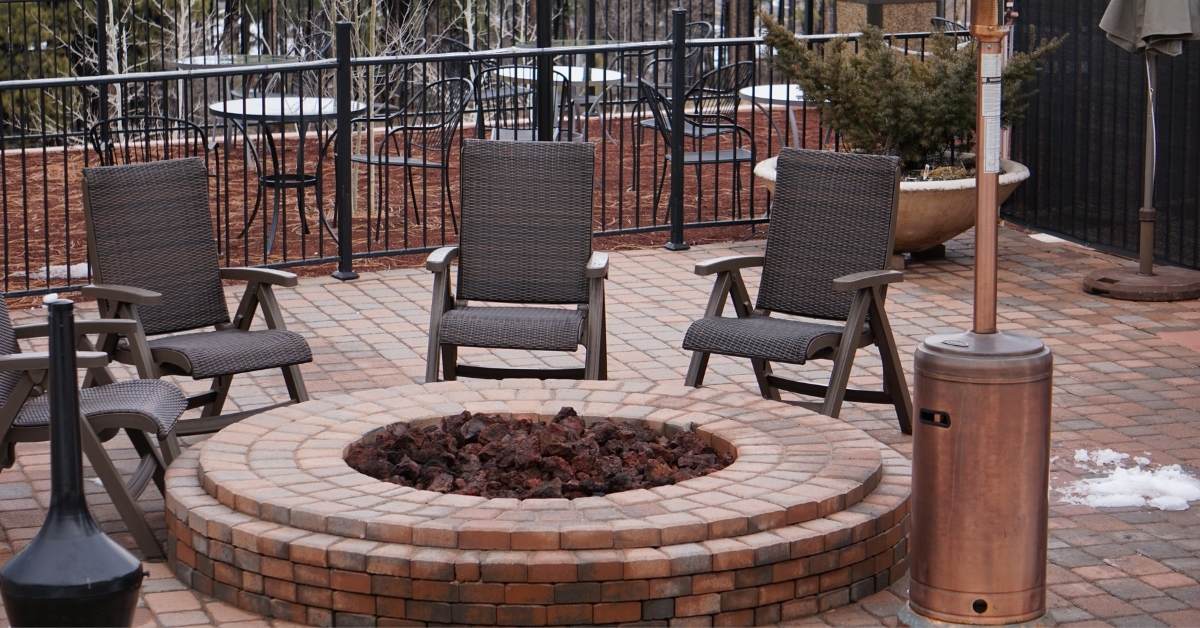Planning garden paths is necessary for big gardens.
Designing captivating and functional garden paths is an absolute necessity when it comes to sprawling landscapes. Just like the carefully crafted layout of your home, your garden’s walkways serve as vital conduits, seamlessly connecting the diverse territories within your expansive outdoor haven. Imagine strolling through your garden, effortlessly traversing from one enchanting space to another, without the need to wander aimlessly or trample upon delicate blades of grass. It’s a vision that every gardening enthusiast cherishes, but how can you bring this dream to life?
To create paths that truly captivate and endure, it is crucial to delve into the intricate details. How wide should your pathways be? What are the ideal dimensions that will not only stand the test of time but also exude an undeniable charm? Let us embark on this fascinating journey together as we explore a plethora of mesmerizing designs and glean inspiration from captivating visuals that will leave you yearning to transform your garden paths into remarkable masterpieces.
As I embarked on my quest for garden path wisdom, I stumbled upon an exquisite website that encapsulated the essence of this art. It is my utmost pleasure to compile and present these ingenious ideas to you, providing a succinct glimpse into the boundless creativity that awaits. So, without further ado, let us dive into this wondrous world of garden paths, where every step unveils a breathtaking vista, and every turn beckons you towards an adventure in nature’s embrace.
Consider And Measure The Topography Of The Area
Embracing the canvas nature has bestowed upon you, the first step towards crafting magnificent garden paths lies in embracing the topography of your land. Whether you are blessed with a flawlessly level expanse or find yourself navigating undulating terrain, understanding and measuring the unique contours of your garden’s topography is paramount.
For those fortunate enough to possess a perfectly flat land plot, the possibilities for path planning are boundless. With no natural obstacles to contend with, you have the freedom to let your imagination run wild. You can opt for straight paths that exude a sense of order and structure, leading the eye toward focal points or hidden treasures within your landscape. Alternatively, you may choose to indulge in the allure of meandering pathways that curve and twist, offering a delightful sense of discovery as each turn unveils a new vista. Perhaps, a network of intersecting paths arranged perpendicularly to one another will add a touch of geometric elegance to your garden. Ultimately, the choice is yours, guided by your personal preferences and the overarching style of your landscape design.
However, if your garden is graced with the gentle undulations of nature’s artistry, it becomes imperative to consider the topography when planning your paths. Each rise and fall presents an opportunity to create a dynamic journey through your garden, where the paths gracefully navigate the contours, harmonizing with the natural slopes and curves. By working in harmony with the land, you can craft pathways that accentuate the inherent beauty of your garden’s topography, creating an immersive experience that seamlessly integrates with the surrounding environment.
So, as you embark on the quest to design remarkable garden paths, take a moment to appreciate and measure the unique topography of your area. Whether you possess a flat land plot or find yourself navigating the undulating wonders of nature, let the topography be your guide, allowing it to shape and influence the path design that will transport you and your visitors into a world of enchantment and tranquility.
When faced with the delightful challenge of the slightly sloping terrain, where the land gracefully undulates with a gentle height difference of approximately 1-5 degrees, the most discerning choice for your garden paths emerges—the captivating allure of zigzagging walkways adorned with seamless transitions. By embracing this design approach, you not only harmonize with the natural contours of the land but also infuse your garden with an enchanting rhythm that effortlessly guides the eye and beckons the adventurous spirit within. Allow your pathways to meander and weave, seamlessly navigating the subtle slopes, creating an immersive experience where each step is a testament to the seamless integration between nature’s artistry and the art of landscape design.
In the realm of steep slopes, where the land proudly unveils its majestic inclines, the need for practicality and safety becomes paramount. It is here that the resolute presence of stairs emerges as the fitting solution for your garden paths. With each step carefully carved into the terrain, stairs not only provide stability and ease of navigation but also become a striking architectural feature that complements the rugged beauty of the slope.
Embrace the verticality of your landscape as the stairs gracefully ascend, unveiling new vistas and granting access to hidden corners of your garden sanctuary. Let the stairs become a testament to the harmonious marriage of functionality and aesthetics, ensuring that every stride upon their sturdy steps carries you confidently through the enchanting terrain that lies before you.
For the fortunate few who possess the remarkable saucer-like territory, where the land gracefully descends from all sides towards the captivating center, the options for garden path arrangements become beautifully unique. In this extraordinary scenario, the garden paths take on the shape of the sun, with walkways radiating outward like glorious rays, guiding visitors toward the heart of this natural wonderland. It is a mesmerizing sight to behold, as each path plays its role in illuminating the way, drawing attention to the central spot that awaits discovery. Embrace the inherent symmetry and harmony of this design, allowing your garden paths to emulate the celestial beauty of the sun, beckoning all who venture within to bask in the splendor of nature’s embrace.
Optical illusions
Once you have settled upon the pattern for your garden path arrangement, it is the perfect moment to delve into the realm of landscape design secrets that allow for the masterful “manipulation” of outdoor spaces through optical illusions.
In the quest to transform even the most modest areas into expansive and breathtaking landscapes, one of the most powerful techniques at your disposal is the creation of meandering lanes. By skillfully curving and winding your paths, you can work wonders in terms of visual space expansion. The smooth and graceful twists and turns of these lanes deceive the eye, giving the impression of a much larger expanse than what actually exists. The mind, captivated by the enchanting journey of the meandering paths, is tricked into perceiving a boundless realm where each step unravels new vistas and beckons exploration.
By embracing this ingenious design strategy, you open up a world of possibilities where size becomes irrelevant, and imagination knows no bounds. Allow your garden paths to flow harmoniously, inviting visitors to embark on a captivating journey that defies spatial limitations. The optical illusion of vastness and grandeur will enchant all who wander through as they witness the remarkable transformation of a small area into a stunning oasis of beauty and tranquility.
However, when it comes to paths leading toward the house, garage, or other areas of the territory, a fascinating phenomenon comes into play. Surprisingly, opting for a wider pathway can create an intriguing optical illusion that makes the path appear shorter. This peculiar trick of perception defies conventional expectations, as the widened expanse of the path seems to compress the distance, creating a sense of proximity and ease of access.
By strategically widening the pathway, you not only enhance the visual appeal of the route but also manipulate the observer’s perception of the overall distance. The mind is enticed by the expanded width, perceiving a shorter journey and generating a subconscious inclination to explore further. It is an intriguing juxtaposition where width transforms into the illusion of brevity, making the approach to various areas of the territory a delightful experience filled with a sense of swift progression.
So, should you find yourself contemplating paths that lead toward your home, garage, or other parts of your garden, consider the paradoxical magic of width. Embrace the enchanting power of optical illusions, where a wider pathway bestows an alluring sense of closeness and beckons visitors to embark upon a journey that is as visually captivating as it is deceivingly shorter.
In the pursuit of creating a more intimate and cozy atmosphere within a vast space, there exists a clever technique that can visually transform the area to appear smaller and more inviting. By incorporating surfaces with symmetrical shapes, such as circles or squares, you can effectively create an optical illusion of reduced size.
The harmonious presence of circular or square elements within the landscape captures the eye and lends a sense of order and containment. These symmetrical shapes act as focal points, drawing attention away from the expansive surroundings and directing it inward, towards a defined and concentrated space. The mind, captivated by the geometric precision and balanced proportions, perceives the area to be more compact, creating a cozy ambiance that fosters a feeling of warmth and intimacy.
Whether it be circular patios, square seating areas, or symmetrical garden beds, these carefully curated features have the power to transform the perception of space. By embracing this design strategy, you not only add visual interest and elegance but also create an inviting environment that feels inherently smaller and encourages a sense of closeness.
So, should you desire to imbue your vast space with a touch of coziness, allow the allure of symmetrical shapes to work their enchantment. Embrace the power of circles and squares, and witness as your landscape undergoes a remarkable transformation, captivating all who enter with a sense of intimacy and a feeling of belonging within a perfectly proportioned oasis.
If your intention is to create the illusion of a visually longer path, there is a versatile array of design elements at your disposal. One effective approach is the incorporation of longitudinals or multi-level borders along the sides of the path, which can work wonders in achieving your desired effect.
Longitudinal borders, running parallel to the path, draw the eye along the length of the walkway, creating a sense of extended perspective. Whether through the use of plants, hedges, or decorative elements, these borders serve as visual guides, emphasizing the path’s elongation and enhancing the perceived length.
Similarly, multi-level borders add depth and dimension to the landscape, contributing to the illusion of an extended path. By incorporating raised beds, retaining walls, or terraced features, you introduce vertical elements that capture attention and visually stretch the path’s perceived distance. The interplay of different levels creates a captivating scene where the eye is enticed to explore further along the seemingly endless expanse.
By strategically implementing these design elements, you have the power to manipulate perception and make your path appear visually longer. Longitudinals and multi-level borders serve as subtle yet effective tools, leading the observer on a captivating journey that defies expectations and fosters a sense of exploration.
So, whether it’s through the artful placement of plants, the careful construction of raised features, or the thoughtful incorporation of borders, embrace the potential of these design techniques. Allow your path to gracefully stretch into the horizon, captivating all who venture forth with the illusion of boundless distance as each step unfolds a mesmerizing vista and reveals the hidden allure of your meticulously crafted landscape.
Optimal width
When determining the optimal width for your garden walkways, a general guideline can be followed to ensure both functionality and aesthetic appeal. For main walkways, a standard width of 3-4 feet is often recommended. This width allows for comfortable passage, accommodating multiple individuals walking side by side and providing ample space for various activities.
On the other hand, supplementary paths, which serve as secondary or connecting routes within your garden, typically have a narrower width of around 1.5 feet. These paths are designed to be more compact and intimate, offering a charming and intimate experience as one traverses through your outdoor haven.
While these standard widths provide a solid foundation for decision-making, it is important to consider the specific shape and length of your walkways when making your final choice. Assess the unique characteristics of your garden, taking into account any architectural features, landscaping elements, or desired functionalities. This will help you determine if a wider or narrower option is more appropriate to meet your specific needs and design preferences.
Ultimately, the decision rests in your hands, allowing you the freedom to choose a wider width if desired. Your personal desires and vision for your garden should guide your choices, as you create an outdoor space that perfectly reflects your individuality and serves as a sanctuary of beauty and tranquility.

